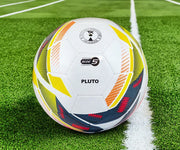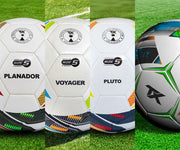So far, we’ve witnessed a lot of the 4-2-3-1, 3-5-3, or 3-4-2-1 formations. Classics of the game that can’t be forgotten or even underestimated. But have you ever tried the 2-3-4-1 soccer formation? No? Let us tell you about it.
Throughout history, we’ve witnessed some great football games, with legendary players and coaches turning mediocre chances into iconic gameplay, giving us a look at their brilliance when it comes to the beautiful game. But while a player’s mindset and team’s unison are important in getting this done, none of it is possible without strategic tactics and formations that the coach sets up and has the team practice for.
While most teams use one or two formations consistently, making changes here and there based on player availability. There are also times when a coach comes up with something so unique, everyone can’t help but watch for the result it will yield. May it be Cruyff’s iconic 3-4-3 diamond or Real Madrid’s 4-3-3 that got them a successful Champions League era.
Now, we’re not saying the 2-3-4-1 belongs in that conversation, at least not yet. But if you’re someone who enjoys gaming, strategy, and shaking things up on the virtual pitch, this wild formation might just be your next favourite experiment.
Breaking Down the 2-3-4-1 Formation
Let’s visualize it: two defenders hold the backline, three sit just in front of them as a midfield shield. Then, four players dominate the central and wide attacking zones. Finally, one striker leads the line.
It’s aggressive; high-risk, high-reward. And it’s not something you’ll usually see on a real pitch. But in the world of FIFA - or experimental youth and club setups- it becomes a playground for creative tactics.
2 (Defenders)
The centre-backs in this system must be elite. No room for error here, they’re the first line of defense after the GK, and they need to be fast, physically strong, and composed on the ball. Your traditional back-four structure is stripped down, so these two players become the foundation of the setup. It’s a good way to test how your defenders perform in 1vs1 duels.
3 (Holding Midfielders or Defensive Midfield Trio)
Think of this line as a flexible shield. You can go with 1 central and 2 left and right flank midfielders, or use a flat trio, depending on the kind of opponent you're facing. This layer helps link defense with attack and gives some breathing space to the back two.
4 (Attacking Midfielders and Wingers)
This block of four stays in the midfield and the final third. You can set it up with two CAMs and two wingers or even run narrow with all four in attacking midfield roles. In games like FIFA, this line becomes crucial in counter-attacks, swarming the opponent with fast transitions.
1 (Lone Striker)
The striker’s job is simple - scoring goals. But they can do that only if they’re sharp and creative with where they reach to receive the ball and how much they can pressure the opponent. You need a very talented forward to make this position worthwhile, for any formation, to be honest.
Is the 2-3-4-1 Formation Realistic in Professional Football?
Short answer? Not really. At least not yet.
The 2-3-4-1 soccer formation isn’t something you’ll see Pep or Klopp roll out in the Premier League; Mourinho? Maybe. That man invented chaos.
But lack of full-backs alone makes it vulnerable, and most coaches prefer formations like the 4-1-2-3 or 3-4-2-1 that offer better balance between defense and attack.
But as a video game tactic? It’s a beast. Especially when you're pushing for goals or want to dominate midfield and attacking thirds with sheer numbers.
When and Where to Use the 2-3-4-1
1. FIFA & eFootball
In video games, you don’t have to worry about your defenders getting exhausted or positional discipline being perfect. You’re just out there trying to break lines and score goals. It works brilliantly in career mode, FUT, or online when you’re chasing goals or want to dominate.
2. Training Sessions / Youth Matches
Want to teach kids about attacking roles and transitions? This setup gets everyone involved in forward play. It also forces your defenders to work on positioning, composure, and communication, because they’re exposed.
3. Friendly or Experimental Games
It’s not for the cup final. But if you're a coach or player who likes experimenting with tactics and player positioning, this gives you room to try creative movements, runs, and passes.
Final Whistle: Why the 2-3-4-1 Deserves a Shot
It’s wild, chaotic, and definitely not your textbook formation. And that’s exactly why the 2-3-4-1 formation is worth playing around with. It opens up the game in ways most standard shapes don’t. Whether you’re on your console or out on the pitch with mates, it gives you room to be bold, creative, and unpredictable.
So go ahead, try it in your next FIFA game, or set it up during training. Just make sure your defenders are ready. Because once the ball is kicked… it’s all or nothing.







